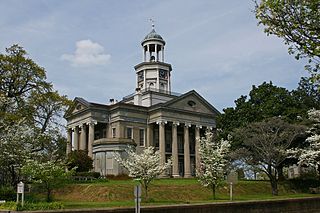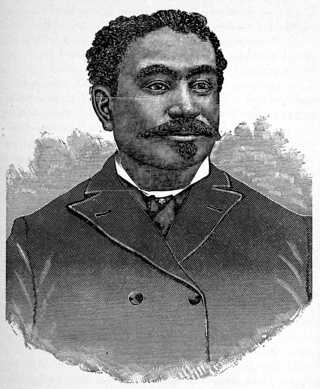
Vicksburg is a historic city in Warren County, Mississippi, United States. It is the county seat. The population was 21,573 at the 2020 census. Located on a high bluff on the east bank of the Mississippi River across from Louisiana, Vicksburg was built by French colonists in 1719. The outpost withstood an attack from the native Natchez people. It was incorporated as Vicksburg in 1825 after Methodist missionary Newitt Vick. The area that is now Vicksburg was long occupied by the Natchez Native Americans as part of their historical territory along the Mississippi. The first Europeans who settled the area were French colonists who built Fort Saint Pierre in 1719 on the high bluffs overlooking the Yazoo River at present-day Redwood. They conducted fur trading with the Natchez and others, and started plantations. During the American Civil War, it was a key Confederate river-port, and its July 1863 surrender to Ulysses S. Grant, along with the concurrent Battle of Gettysburg, marked the turning-point of the war.

Hiram Rhodes Revels was an American Republican politician, minister in the African Methodist Episcopal Church, and a college administrator. Born free in North Carolina, he later lived and worked in Ohio, where he voted before the Civil War. Elected by the Mississippi legislature to the United States Senate as a Republican to represent Mississippi in 1870 and 1871 during the Reconstruction era, he was the first African American to serve in either house of the U.S. Congress.
The history of Pensacola, Florida, begins long before the Spanish claimed founding of the modern city in 1698. The area around present-day Pensacola was inhabited by Native American peoples thousands of years before the historical era.
The 10th Louisiana Infantry (African descent) was a regiment in the Union Army during the American Civil War. It was composed primarily of freed or escaped slaves from Louisiana's plantations and was commanded by white officers.
The 46th Regiment Indiana Infantry was a regiment of the Union Army during the American Civil War.

The Indianapolis Freeman (1884–1926) was the first illustrated black newspaper in the United States. Founder and owner Louis Howland, who was soon replaced by Edward Elder Cooper, published its first print edition on November 20, 1884.

The 46th United States Colored Infantry was an infantry regiment that served in the Union Army during the American Civil War. The unit was originally designated as the 1st Arkansas Infantry Regiment. The regiment was composed of African American enlisted men commanded by white officers and was authorized by the Bureau of Colored Troops which was created by the United States War Department on May 22, 1863.
The Savannah Tribune is a weekly African-American newspaper published in Savannah, Georgia.

James J. Spelman was a journalist and politician in New York and Mississippi. His early career was as a journalist and a stage performer and manager in New York City. During the American Civil War (1861–1865), Spelman helped encourage the use of African-American soldiers, and once they were allowed, helped recruit. After the war, he moved to Mississippi where he continued his work as a journalist and served for six years in the state legislature.

The Colored Citizen was an African American newspaper published in Helena, Montana, for two months in 1894. It was published by J. P. Ball, Jr., using finances from white politicians to promote Helena's bid to become state capital over Anaconda in the 1894 Montana capital referendum.

Willis Elbert Mollison (1859—1924) was an American teacher, newspaper editor, politician, banker, businessman, lawyer, public official, and civil rights advocate in Mississippi. He was a Republican.

In the 1890s, the state of Montana held a referendum to select its capital city. The first round was held in 1892 between several cities, and since none won outright, a second round was held in 1894. After an expensive and negative campaign, Helena was selected as the capital over Anaconda by a margin of around 2,000 votes.

The Colored Radical was an African American newspaper in Kansas. It was the first black newspaper in the state and was published in Lawrence and Leavenworth for just under three months in 1876. The paper supported the Kansas Republican Party during the that year's elections, argued against racial segregation, and reported on lynchings like the Hamburg massacre in Hamburg, South Carolina. Following the conclusion of the elections, the paper dissolved, and only five of its fourteen issues are extant.
The Colored Citizen was the first African American newspaper published in Mississippi. It was founded by Henry Mayson in 1867, and it probably died by 1868. According to Mayson, the paper sought racial equality and the elimination of racial discrimination, including in school funding schemes. No surviving copies of the paper have been located.









